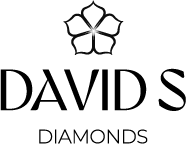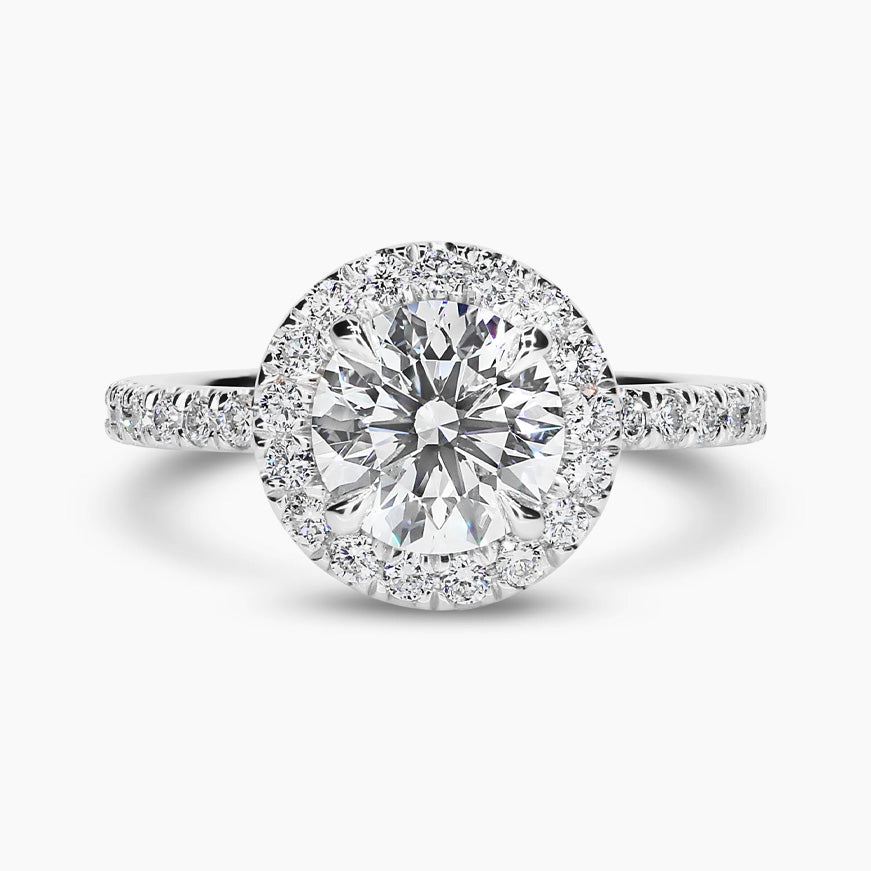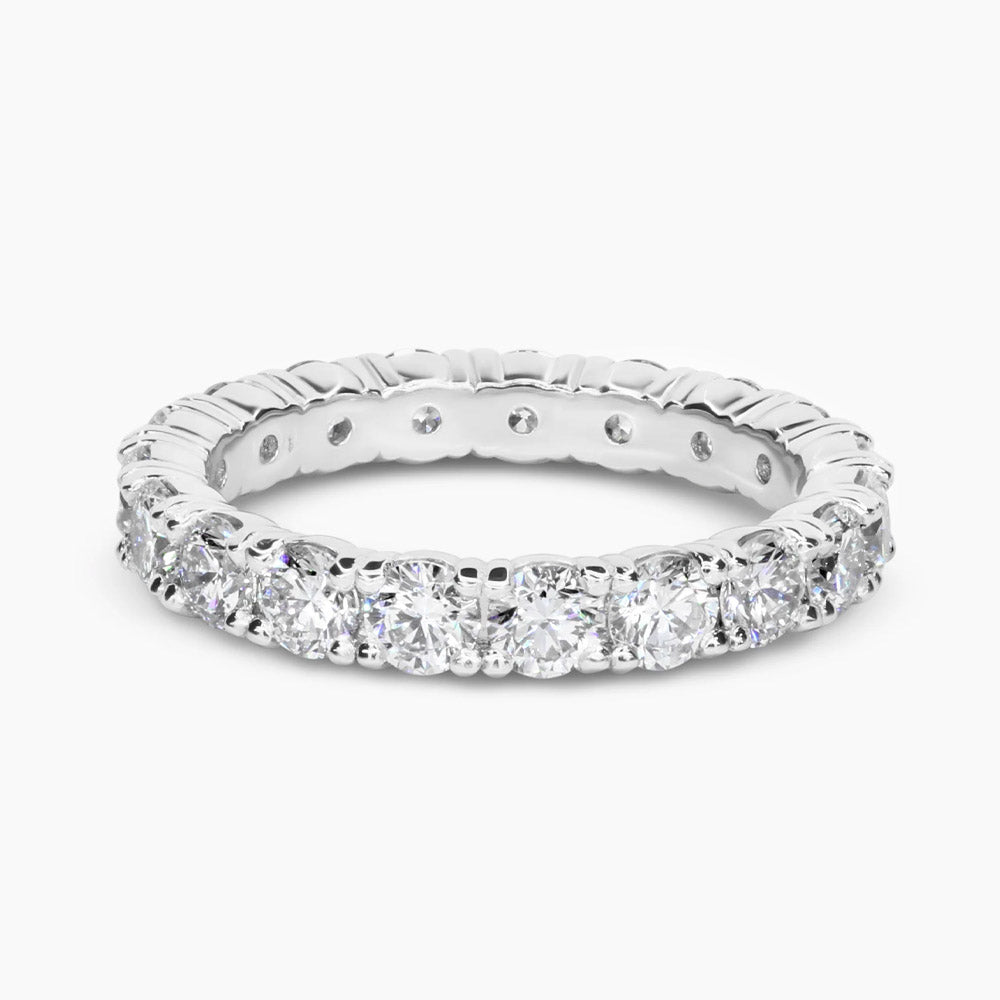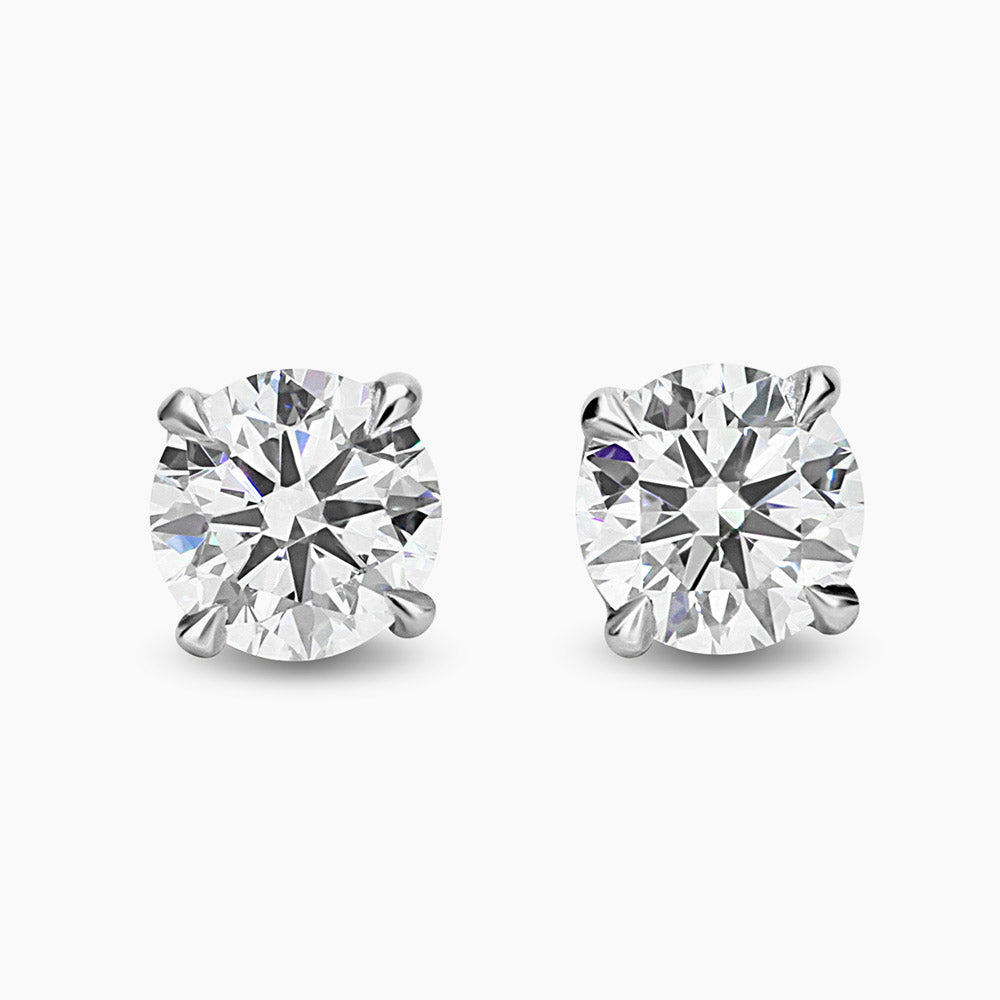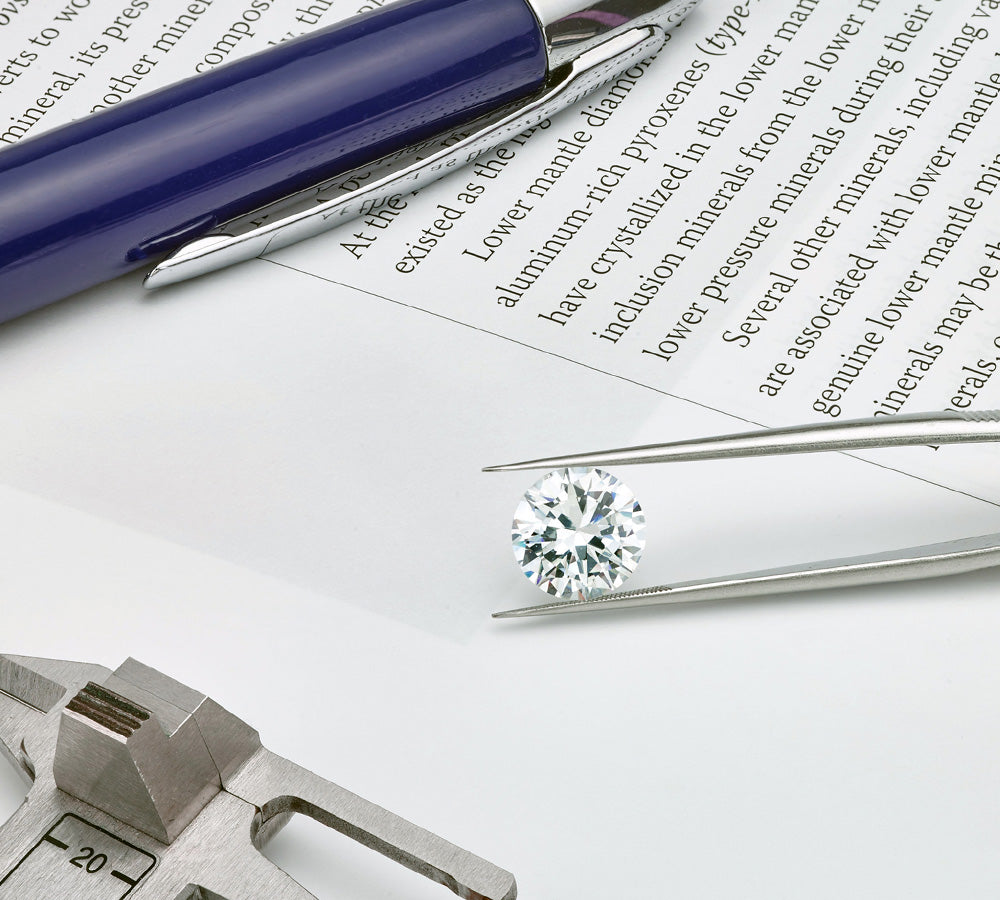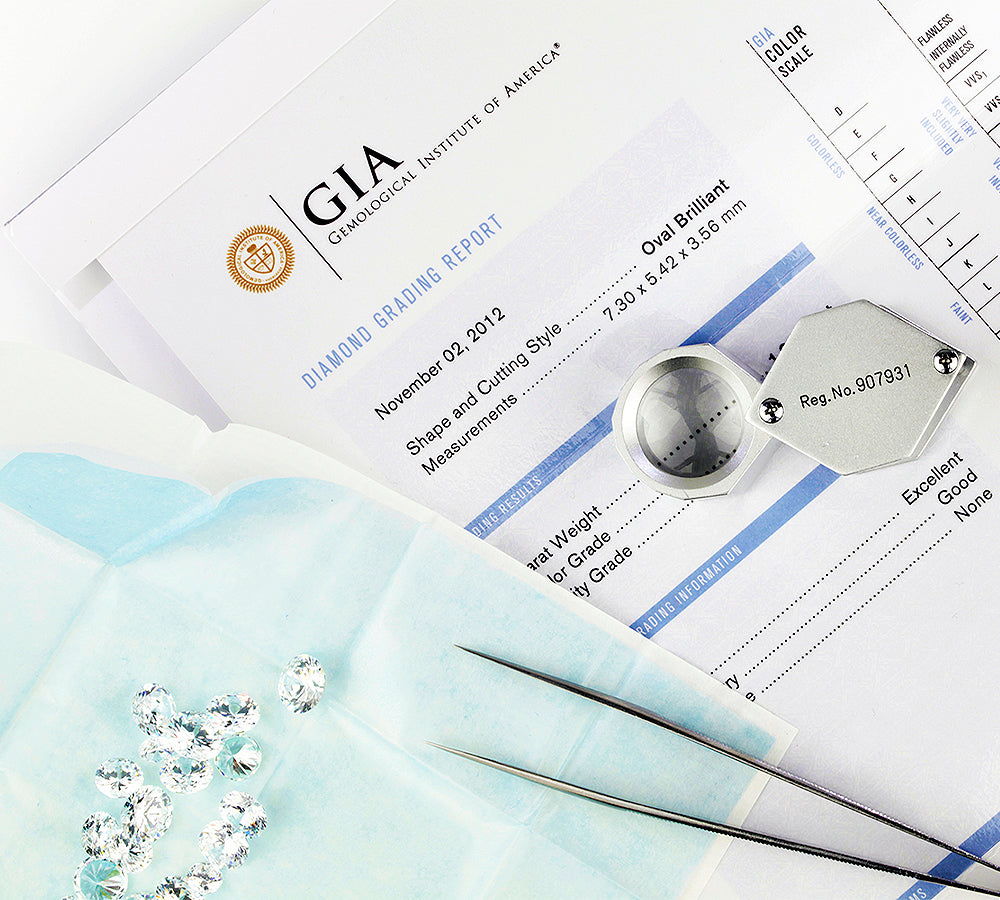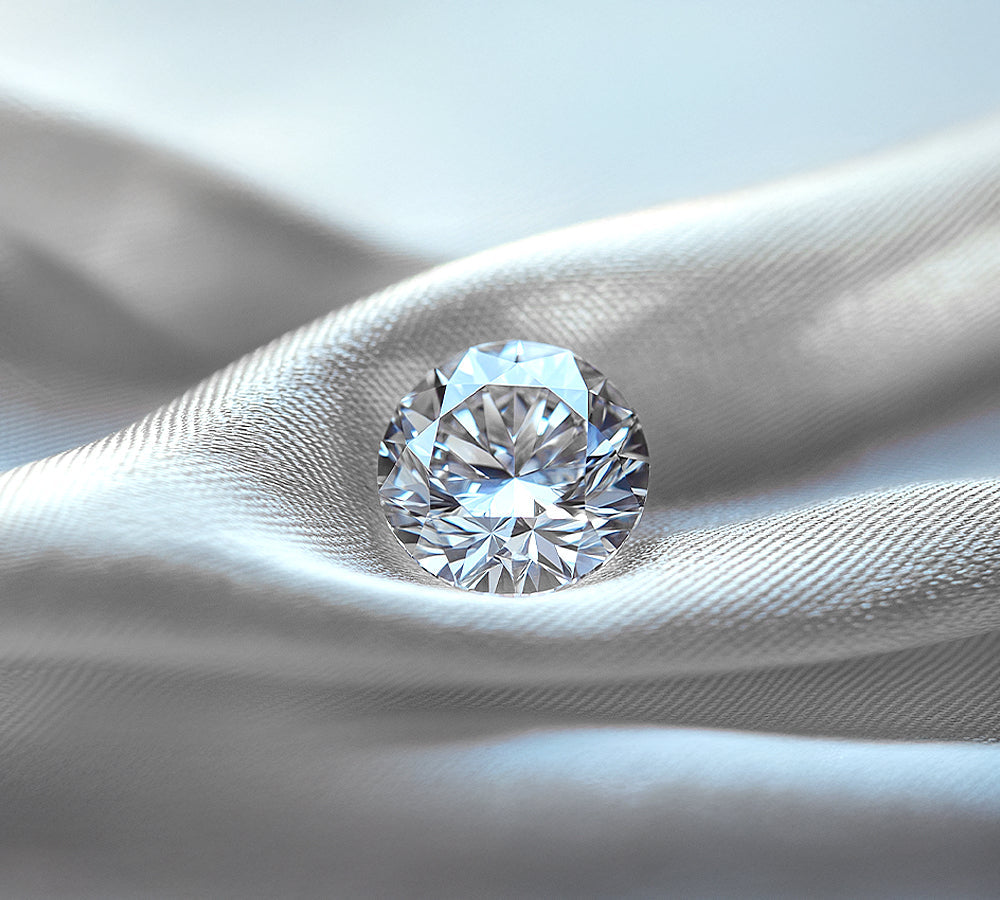Carat Weight
Carat is the unit of weight for diamonds. Diamonds under 1 carat in weight are discussed in terms of "points" with 100 points equal to 1 carat A stone weighing 75 points weighs 75/100 of a carat, or 3/4 carat; a 25 point stone is 1/4 carat; a 10 point stone is 1/10 carat.
Knowing the "per carat cost" will allow you to determine the actual diamond price. In pricing, there's a great difference between one carat total weight (1 ct TW) versus the weight of a one carat stone (1 ct). For example, a one carat diamond is much more valuable and much more expensive than a grouping of several smaller diamonds which when combined, add up to one carat in total weight.
Bigger Diamonds Cost More
Assuming all other characteristics are held constant, as a diamond gets bigger it becomes substantially more valuable in a non-linear way. A two-carat diamond of the same cut, color, and clarity quality of a one-carat diamond can be worth four times as much. This phenomenon is likely attributed to the increasing difficulty of finding larger raw diamonds in nature.
Price Jumps Set at Integers
Due to consumer preferences and buying habits, significant price jumps of polished diamonds are conveniently set around simple integers, such as one carat, two carats, three carats, etc. Premium factors are added to intermediate sizes to correctly adjust the value of these sizes. Examples of these sizes would be .85-.89ct, .95-.99ct, 1.25ct-1.49ct, 1.70-1.99ct, 2.70ct-2.99ct, 3.70ct-3.99ct. The most notable price jump thresholds are .50ct, .70ct, .90ct, 1.00ct, 2.00ct, 3.00ct, 4.00ct, and 5.00ct. Due to the significant jump in price at these thresholds, most cutters, driven by profit objectives, reach these weight thresholds at the expense of the diamond's cut quality and beauty.
Size Depends on Cut as well as Weight
It's important to note that even though large diamonds of great carat weight are impressive in size, they may not always be valuable because they are not judged by weight alone. Also, keep in mind that weight does not always mean size, it really depends on cut. A heavier diamond can appear smaller if it is cut too deep and dull. Weight is always relative to other factors and each of the 4Cs must always be considered in equal proportion to the diamond's carat weight.
Buying Strategy for Carat
Those who have studied the Price Reports and recognize that diamond sizes just below the 1,2,3,4 carat sizes are significantly less costly, might try to search for diamond sizes in the range of .90-.99ct, 1.75-1.99ct, 2.75ct-2.99ct, 3.75-3.99ct, etc. Please note that the selections in these ranges are much more limited and will often cost big premiums. Therefore, always make price and quality comparison with the diamonds in the larger weight class before making the final decision. Color and clarity range can be shifted slightly with professional guidance without affecting the beauty of the diamond provided that the cut is done really well. Often you can get a better discount off the Price Report on the larger sized diamond. The fact that your lady doesn't have to tell everyone that her diamond is almost a certain carat weight might have more long term value to you than the dollars that you save today.
Take a look at DSD's Diamond Inventory if you are interested in examining diamonds of different carat weights.

